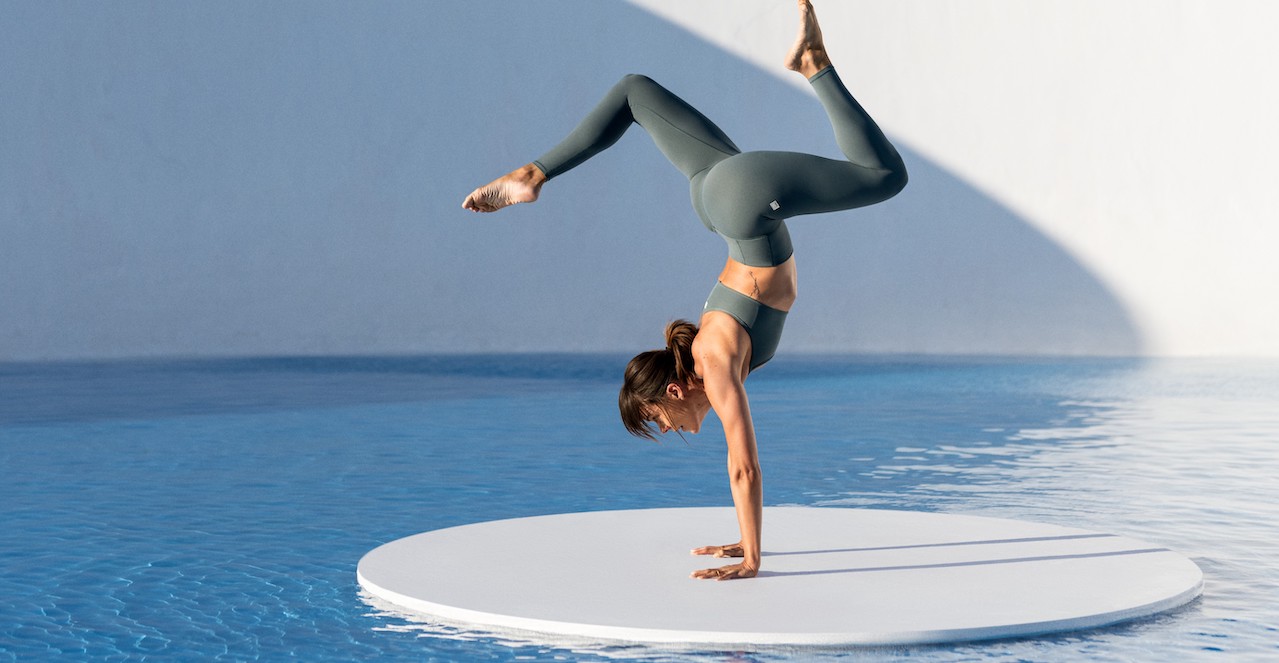The anatomy of an athleisure hype brand
In the aftermath of the 2008 financial crisis, Joe Kudla, like thousands of others, had put his dreams on the back burner to pursue more stable employment. At the time, Kudla owned a men’s apparel brand while simultaneously running an IT business. That brand closed during the Great Recession, and it wasn’t until 2015 that Kudla’s fashion obsession resurfaced in full force to become Vuori, the athletic and leisurewear brand now valued at $4 billion.
The origin of Vuori is similar to another juggernaut: Lululemon. Kudla and Lululemon founder Chip Wilson both began taking yoga classes after experiencing a back injury and observed the state of yoga apparel. In 1997, yoga apparel was niche and closely related to dancewear, and Wilson saw a market opportunity. Meanwhile, in 2015, Kudla observed few options suitable for multiple aspects of daily life. It was there that the idea of performance-meets-versatility became Vuori, Finnish for “mountain.”
“We wanted to build products that, at their core, were built to move and sweat in but had an aesthetic that you wanted to wear across multiple aspects of your life,” said Kudla, founder and CEO of Vuori. “Today, every men’s brand talks about versatility as a core and fundamental, but at the time [of our launch], nobody had that.”
As it stands now, Vuori is one of the most buzziest apparel brands in the athleisure space. As of 2021, the company received its $4 billion valuation following a $400 million funding round led by SoftBank Group Corp.’s Vision Fund 2. The California-based company operates 35 stores in major markets including Los Angeles, Seattle, San Francisco and Boston. It’s opened at least 10 stores since January and plans to bring that number to just over 20 for the year, said Kudla. The goal is to operate 100 Vuori stores in the U.S. by 2026. In October, rumors spread that the brand is considering a 2024 IPO, but Kudla declined to comment on the matter.
Vuori is not the only athleisure brand to generate buzz while others have struggled. Alo Yoga reported over $1 billion in sales for 2022. Its parent company, Color Image Apparel, is now exploring a potential investment, per Reuters, that could value the U.S. brand at about $10 billion. Alo Yoga has reportedly hired investment bank Moelis to advise. The company declined to be interviewed for this story. And Sporty & Rich, which began as an Instagram account in 2014 before formalizing into a brand in 2018, has steadily grown into a $30 million business. Kim Kardashian’s underwear brand Skims, which sells active and loungewear, also raised financing this year at a roughly $4 billion valuation.
Compare this to U.K.-based Gymshark, which earlier this year ceased most of its U.S. operations and laid off approximately 65 employees. Outdoor Voices is still limping along after its implosion in 2019 but has failed to recapture the spirit of an ardent customer base. The company generated nearly $100 million in top-line revenue in 2022, but consistent profitability appears elusive. Vuori’s competitor, Lululemon, has continued to grow but took a significant misstep in its 2020 purchase of virtual workout company Mirror. The company has struggled to find a buyer after Mirror’s value reportedly decreased nearly 10 times from its $500 million price tag. And Gap Inc.-owned Athleta replaced its former CEO with Alo Yoga president in July to infuse some innovation into the 25-year-old brand, which had faced “product acceptance challenges over [prior] several quarters,” according to the Gap executive team in March.
At the heart of buzzy athleisurewear brands is an appropriate mix of form-meets-function clothing, innovative marketing strategies, and the ability to both connect the narrative dots of an aspirational lifestyle and sustain a fanbase.
“Loyalty is huge [within activewear]. If people find a pair of great leggings, they’re going to want to invest in that brand and spend their money,” said Véronique Hyland, fashion features director at Elle and the author of the book “Dress Code: Unlocking Fashion from the New Look to Millennial Pink.” “Athleisure is less about fitness and the product quality, and more about giving off an impression of wellness or being in the know.”
That loyalty and aspiration translate to an $87.2 billion U.S. market as of 2021, according to Grand View Research. It’s expected to grow at a compound annual growth rate of 8.3% from 2023-2030. According to a 2022 report from Mintel, for 43% of consumers, more than half of their wardrobe is made up of athleisure items. And 55% of consumers wear athleisure for both relaxing at home and exercising, underscoring why this market is growing so quickly and why it dominates the American wardrobe.
The brands most relevant in the athleisure space today often reflect a sartorial zeitgeist. The pendulum of fashion and society was focused on performance, #hustle and girl-boss brands in the late-2010s era of low-interest rates and high valuations, but it has since swung to leisure, #selfcare and a lazy-girl-jobs period while everyone bides their time for more rewarding socio-economic opportunities.
“Sporty & Rich is a good example of performative leisure; their Instagram serves as a mood board of a retro fitness [lifestyle], which has become aspirational for many people,” said Hyland.
When Sporty & Rich first began as an Instagram account, it was merely a hobby for the then-20-year-old Emily Oberg, founder of Sporty & Rich. Posts are often pictures from the 1970s and 1980s of people playing tennis or skiing, Slim Aarons-style photos, or images showing vaguely Reaganomic signifiers of wealth. As the brand’s following grew — it currently has 527,000 Instagram followers — Oberg began to envision building upon the account, including with a print magazine and a line of merch. She connected with French businessman David Obadia to establish the brand, which now offers sweatpants, crewneck sweatshirts and caps, plus a tome published in Sept. 2022 called “The Sporty & Rich Wellness Book.”
“We’re less about chasing trends and more about making items that we think will be relevant years from now,” said Oberg. “Right now, we might look like a trendy brand because this is what everyone’s into and wearing. … I’m sure something else will become more popular and trendy in the next two months or two years.”
Wellness is clearly top of mind for Sporty & Rich, as well as for other athleisure brands including Alo Yoga. At its newly opened SoHo flagship store in July, Sporty & Rich has a spa with two treatment options plus a café offering espressos, matcha lattes and smoothies. The plan is to have these within every store it opens, though there are no additional stores in the works. On top of the book, Sporty & Rich has an online editorial site called “Wellness Club,” which houses wellness-focused stories. And Oberg said she has plans to expand the brand into beauty and wellness supplements at an undetermined time. Alo Yoga, meanwhile, launched a skin-care line in 2020 and, in August, it debuted gel shot supplements as part of a collection called the Alo Stackable Wellness System. Lululemon previously launched beauty products in 2019 but has yet to venture into supplement territory.
“The wellness industry, in general, has more longevity than fashion and fashion brands. We want to be more of a wellness-focused brand and offer lifestyle over product,” said Oberg.
Additionally, she’s interested in the offline potential for Sporty & Rich, including through brick-and-mortar and in-person influencer-editor tennis events. Its first tennis event was held two years ago, while upcoming events it plans to host include Art Basel Miami, the various fashion weeks and the 2024 Paris Olympics. But Sporty & Rich plans to have customer-focused events starting within the next year.
In-person community-style events have become a hallmark of athleisure marketing. Kudla pointed to the sociability of more recent fitness trends, like community-oriented fitness studios SoulCycle and Barry’s. And because of that, people have also wanted to look good while working out and socializing with other like-minded healthy people. Vuori offers in-person fitness classes at its stores and has the ACTV Club for excursions like running. Of course, these brands did not pioneer the concept. Nike developed its running club app between 2010-2012, and Outdoor Voices culturally ascended, in part, for its #DoingThings event series. Currently, no events are listed for Outdoor Voices on its event webpage.
And it helps to have a very public fan base, especially when they are unpaid. Alo Yoga items are frequently worn by celebrities like Taylor Swift, Katie Holmes, Hailey Bieber and Kendall Jenner, and featured in paparazzi photos. It’s a relationship that Alo has promoted in web posts and paid SEO search terms, though not on its Instagram. The brand hosted a New York Fashion Week event in 2021 and enlisted Kendall Jenner for a collaboration the same year. This year, it ventured onto the metaverse platform The Sandbox, and in October, it debuted Alo Atelier, a new luxury collection for “street and soirée” occasion wear, as it aims to become a broader lifestyle brand.
For its part, Sporty & Rich has carved out a strong, limited-edition collaboration strategy. That’s included two collabs so far with Adidas, as well as one with the ritzy Hotel du Cap-Eden-Roc — where Sofia Richie Grainge was married — and one with Lacoste, to name a few. Meanwhile, Vuori can count Gwyneth Paltrow, Jake Gyllenhaal and Vanessa Hudgens as fans. Paltrow once raved on her Instagram Stories that she was “obsessed” with the brand’s leggings. In addition, Vuori operates an influencer program for “motivated athletes and fitness enthusiasts” who receive perks including 40% off apparel purchases and exclusive shopping opportunities. Ambassadors are asked to use the hashtag #TheRiseTheShine, #V1Discount and tag @VuoriClothing, though Vuori does not have universal expectations for posting frequency, according to the brand.
But as Vuori looks to the future of scaling its business, Kudla insists that the strategy lies in performance-backed fabrics. Vuori’s travel assortment, which features fabrics from the lounge and fitness products, is selling “very well,” said Kudla. He said Vuori looks at product innovation through a fabric- or textile-first lens. Meanwhile, the design ethos is effortless and sophisticated but never overdesigned, he said. The brand’s newest fabric, BlissBlend, launched in August and can stretch 200% more than traditional Spandex, Lycra or Elastane without losing its hold, according to the brand. Kudla said that, besides versatility, Vuori wants to own and be known for its innovative and soft fabrics.
Kudla said anecdotally that Vuori has “a small fraction” of the awareness of competitors like Nike and Lululemon. According to the professional organization Footwear Distributors & Retailers of America, Nike has approximately 33% of the sports apparel market share, while Under Armour accounts for 14% and Adidas has 6%. To that end, to expand its reach, Vuori is directing its attention outside of the gym space by working on outerwear and outdoor clothing, swimwear and surf products. In 2018, Vuori launched women’s clothing, which now represents 50% of brand sales.
In addition to investing in physical retail, Vuori is beefing up its business infrastructure. Vuori began using a new enterprise resource planning software system in 2023 and is now building a 175,000-square-foot headquarters campus in Carlsbad, Calif., which is set to open in the first quarter of 2024. Additionally, the brand is hiring 200 employees for corporate roles, though Kudla declined to specify roles or teams. Vuori currently has over 2,000 full-time employees, including retail, fulfillment centers and corporate positions.
“Many people question how big this category can get, both for men’s and women’s,” said Kudla. “I don’t necessarily believe the reason for our successes is coming at the detriment of other brands. You see some of our peers grow tremendously [even during] our phase of our rapid acceleration. The reason for that is because there is a very big movement toward living an active, healthy lifestyle in our country and beyond; it’s a global movement.”





